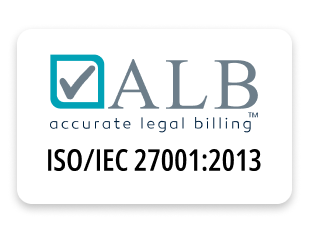
Law Firm Innovations in the Wild
Innovation is everywhere in the legal sector these days. From job titles to department names and beyond, innovation is omnipresent. One legal industry commentator went as far as to say that “Innovative is the new Prestigious” in law firm superlatives. With the confluence of pressures on the legal industry coming from legal technology, more cost-conscious clients, and decreased demand for services, law firms have to change and are looking to find new, innovative ways to practice law.
What does this change look like and does it equate to innovation in its creativity, newness, and effects on legal practice? In a slow-moving legal profession which is inherently backward-looking and precedent-based, how does the innovate mindset manifest itself? In a world that has come to see innovation in the form of electric cars or smartphones, legal innovation will struggle to make big waves, but there is an increasing number of innovations that are changing the law in some new and significant ways.
Technology
Innovation and technology go hand-in-hand as to almost be synonymous, but technology represents just part of what innovation means in legal. Legal tech is booming and maturing at a rapid pace. These are a few of the most significant technologies.
Timekeeping, budgeting, and billing.
Practice management software comes in many shapes and sizes. Tools that help law firms centralize key functions and allow them to track the work they do, bill clients accurately, get paid in a timely manner, and develop budgets for new client engagements are standard across law firms of different sizes and practice types. Tools like Accurate Legal Billing have taken these functions to the next level and introduced smart technologies driven by AI that help guide practitioners as they record their time to ensure compliance with firm and client’s billing requirements. The next frontier is using AI to bill time with no touches, using technology that tracks and analyzes attorney work patterns and automatically bills certain behaviors.
E-Discovery.
An original technology to take hold throughout the legal sector, e-discovery benefited from strong support from judges who saw automated document review as more economical and therefore equitable than traditional (human) document review. E-discovery has become a norm in litigation involving large-scale document review.
It is important to note that several significant factors led to the growth of and general comfort with e-discovery. The long, but recent, history of e-discovery is worth researching, but for the sake of this post, history is less important than the why.
First, leading judges made the decision that this technology as an acceptable method of document review. Others soon followed the lead of these groundbreaking judges. This was a break with precedent, but equity and justice considerations won out over tradition.
Second, the technology was up to the task and produced high-quality results that matched or exceeded human review in a fraction of the time it took to do the same review. The costs of the technology were at or lower than the time lawyers would bill to review the same documents. These factors offer insight into what factors can help other innovations succeed.
Litigation Analytics.
AI, like the word innovation, can have many meanings and is often thrown around as a buzz word in legal technology. There are several areas where artificial intelligence is succeeding. One is in litigation analytics. Firms are now able to analyze their own performance and the tendencies of the court. One type of tool analyzes firm filings and evaluates the arguments based on available case law and other factors, giving these filings grades. Clients can see if their high-powered law firm is producing quality that matches the billable rate. Another type of tool reviews tendencies of the court and of individual judges so that lawyers can prepare arguments that are likely to be persuasive to the judge. Firms can also track their own performance in certain courts to use as a part of marketing materials.
AI Assisted Document Analysis.
AI text recognition and machine learning tools are making great progress with learning and dissecting contracts and other legal documents. Law firms are increasingly able to use these technologies to assist with corporate-related document review and contract negotiation and drafting. In house legal teams are benefiting from this technology to reduce their costs and time required for contract review. Much like e-discovery, this technology is emerging but will likely become the norm in the legal industry, reducing the time it takes to format and process documents and allowing lawyers to practice at the top of their license.
R&D Functions
Beyond technology, some large law firms are going “all in” on legal innovation by starting legal incubators in the style of start-up tech incubators. Firms provide workspace, funding, and other resources with the goal to identify innovations in the form of new technologies or processes that might be scalable and become profit generators. These R&D centers have produced technologies that mix lawyer workstreams with available technologies to focus on particular problem areas or areas ripe for process improvement. Tools like corporate transaction management tools have originated from these innovation centers. R&D and the “fail fast” culture of start-ups is opposite the traditional law firm culture that is risk-averse and focused on perfection and precision, but as innovation becomes more mainstream, so does the need to focus some lawyer energy on trying new things, even if they fail.
Data
As the Big Data mindset and methodologies have permitted business and society-at-large, it has not been lost on law firms that they generate and maintain a significant amount of valuable client data that could be harnessed to provide deep insight to clients. Law firms and lawyers are not natural data miners, but that is changing. Tools like Accurate Legal Billing have innovative, customizable dashboards that help firm leaders and managers unlock valuable internal performance metrics. An increasing number of firms are hiring data scientists to mine internal data housed in documents or other client materials to develop insights they can share. Clients often have difficulty understanding their own market or industries and law firms have a lot to offer beyond nuts and bolts legal advice. Firms are innovating by becoming more fulsome advisors to clients.
Innovation in the law may never be as flashy as the newest smartphone release, but it is happening at an increasing pace and reshaping an industry. The law, by design and due to the personalities of those who choose the profession, will always change slowly and deliberately. In many ways, this is a strength, with a focus on real, lasting change that will benefit clients.

.png)



